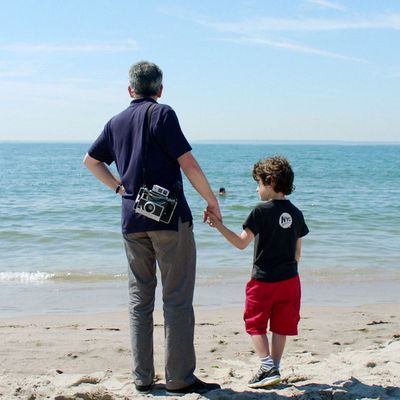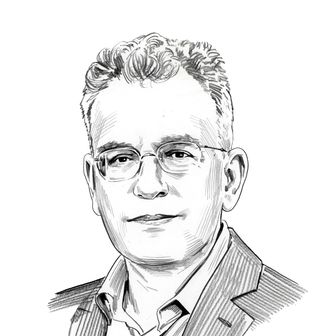
“If you write a Cult book,” the essayist Helene Hanff once remarked, “the Cult loses no time getting in touch with you.” I can confirm that it’s true. Six years ago, I published a book about the history of Polaroid photography, a medium that appeared to be on the verge of extinction. Polaroid had stopped making film in 2009, and dismantled all but one of its factories. That one last plant had been bought by a couple of entrepreneurs who had struggled mightily to get it up and running again, and at first produced only a dodgy beta-test product when they did. (It has since gotten much better.) But, it turned out, 70 years of birthday parties and smart marketing and Andy Warhol — and, yes, nudie pictures — had built Polaroid a huge following, and the Cult had found a new generation as well. A lot of the same people who kept vinyl records from going extinct, it turned out, were also interested in cameras and film. Some of them also make documentaries, and one of those, Instant Dreams, gets its New York premiere tomorrow at the IFC Center.
It’s not the first of its kind. That would be Time Zero: The Last Year of Polaroid Film, made not by a Williamsburg beardie but by Grant Hamilton, a libertarian surgeon from Iowa who shoots very cool photographs himself. Time Zero came out in 2012, and I liked it quite a lot. I also figured that was all there was to say on the subject — until 2014, when I got an email from a Dutch filmmaker named Willem Baptist. He was making his own Polaroid-film film, and (he explained) he wanted to get into the subject with a few enthusiasts. I have shot enough news segments as a New York editor that I know the drill: you sit in a chair, they film you answering questions for an hour, they snip out the 180 useful seconds, and if you haven’t said anything truly dumb, it’s over and done with.
But that wasn’t how it was going to go, not this time. Willem gradually made it clear that this was going to be a film in which I was an actual character. My son, who at the time was 5, could be one as well. I didn’t quite know what I thought of that idea. Would my son be comfortable on camera? What if he melted down or said something inappropriate and it ended up onscreen? Did I want to put him in a position that could leave him looking foolish later in life?
On the other hand, Gore Vidal once said — though I’m expurgating the real quote here — that one should never turn down a chance to be on television, and that goes double for being in the movies. (Triple, when you are trying to get a toehold in the world as an author. Books don’t have immense marketing budgets.) In the end, my wife and I decided that it would be nice to have a professional-grade document of our son’s childhood. He won’t be 5 forever, we thought, and maybe when he’s older, he’d enjoy seeing a movie in which he and his dad spend time together. We said yes.
Willem came over from Rotterdam and pre-interviewed me, making hours of digital audio recordings, and then went back to rustle up more funding and start production. In August 2016, he returned with his film crew. He booked six days here, large portions of which were spent with my family. I walked my kid to school — summer camp, really — and he filmed it. I went to work, and he shot me going into the elevator, coming out of the elevator, making a phone call at my desk, and doing a few other random bits of business. My Vulture colleagues were, I think, a little nonplussed when Willem’s crew laid out dolly tracks in the hallway in front of my cubicle and started doing slow pans as I sat there and faux-typed. One of my favorite Vulture neighbors, Jackson McHenry, also has a brief on-screen moment.
Most of the filming work, though, was done in the evenings. Willem and his crew shot in our apartment and around our neighborhood, but we also did one long, swirly pass in a taxicab through Times Square at 11 p.m. or so, to get some New York color. It was August, and I had made the tactical mistake of wearing a navy jacket and dark trousers the first day we filmed; each day thereafter, Willem asked me if I could dress similarly so he could cut all his shots together. Which would have been fine, were it not August in Manhattan, and had I not sweated entirely through the jacket the first morning. After two days, I started trying to steam the creases out of it each evening so I didn’t look quite so bedraggled.
The only time I put my foot down was when we made a few shots on the Coney Island beach at high noon. It was 97 degrees in the blazing sun, and I had to rather firmly explain that I might look a little out of place sweating through a suit jacket. It was the closest I ever came to diva behavior, and it led to what I think of as the Great Dutch-American Polo Shirt Compromise (see photo, above).
And there were surprise gifts from the documentary gods. One weekend day, we made our way to the Brooklyn Flea, in Fort Greene, where a vintage camera dealer I like was selling Polaroid cameras. Turns out that a permit we thought had been granted by the Flea had not been, and we were escorted back out through the gate. We were scratching our heads over what to do for about two minutes when we ran into the street photographer Louis Mendes, who shoots on Polaroid film all day long. A few minutes later, we ran into a clutch of cute young women messing with the Polaroid camera and film one of them had just bought at the Flea. And after that, we just set up a tripod and I started asking passersby, “Hey, these guys are making a movie about Polaroid photography. Mind if I take your picture?” and chatting with a spectacular array of Brooklynites, old and young, cool and not, as they watched their photos develop. Though the whole Brooklyn interlude ended up on the cutting-room floor — hey, that’s showbiz — it went uncannily well.
So did the party. Willem had asked me if my office-mates are the types to go out for drinks en masse after work on Fridays, because he was hoping to shoot me in a group of some kind. We aren’t. But purely by chance, a journalist friend happened to email me that week, saying he was having a birthday-and-housewarming celebration. I sent back the most extraordinarily hubristic RSVP imaginable: “I’d love to come, and, uhhhh, do you mind if I bring a film crew?” For some mysterious and generous reason, he said yes. (Maybe he knew the Gore Vidal quote, too. He is, indeed, in the movie, as are his wife and a whole bunch of their startled friends.)
I was wiped out by the end of the six-day stretch. I am not a performer by nature — that’s why I write — and being UP! and ON! for the camera was draining. Also, we were often working till 1 a.m. But I will say that Willem and his crew took pains to keep it gentle, especially with my kid (who is much more of a natural on camera than I am). And then came silence from the team in Rotterdam for a year or so, during which I will admit that I occasionally wondered if it had all come together.
It had. I didn’t get from New Amsterdam to Old Amsterdam for the world premiere, but a few months ago the film screened at a festival in Jersey. My wife and son had never seen it, and I’d watched only a small-screen low-res download (discovering that, yeah, I’d said a couple of stupid things, but it wasn’t the end of the world). We invited my parents, too. I hadn’t quite grasped this going in, even though I knew it, but it turns out to be a movie about three people with connections to Polaroid instant film: a chemist in Germany who worked on its reincarnation, a photographer in Los Angeles who made her life’s work with it, and the writer in New York who tells its story while running around with his son, and appears to own only one wrinkled navy jacket. And also a polo shirt.
The kid is the best thing in the movie, of course.
Instant Dreams will screen at the IFC Center on Saturday, November 10, at 11:30 a.m. I’ll be there for a Q&A afterwards.


